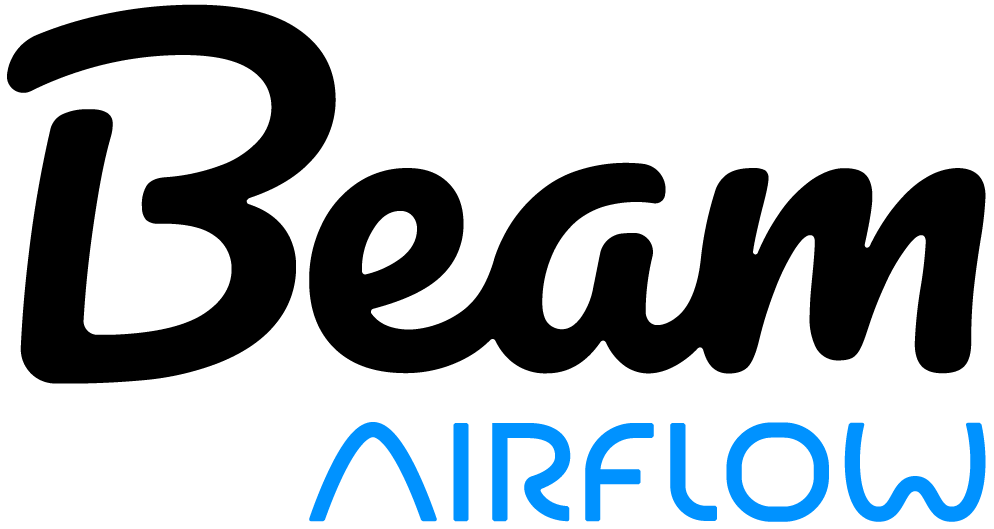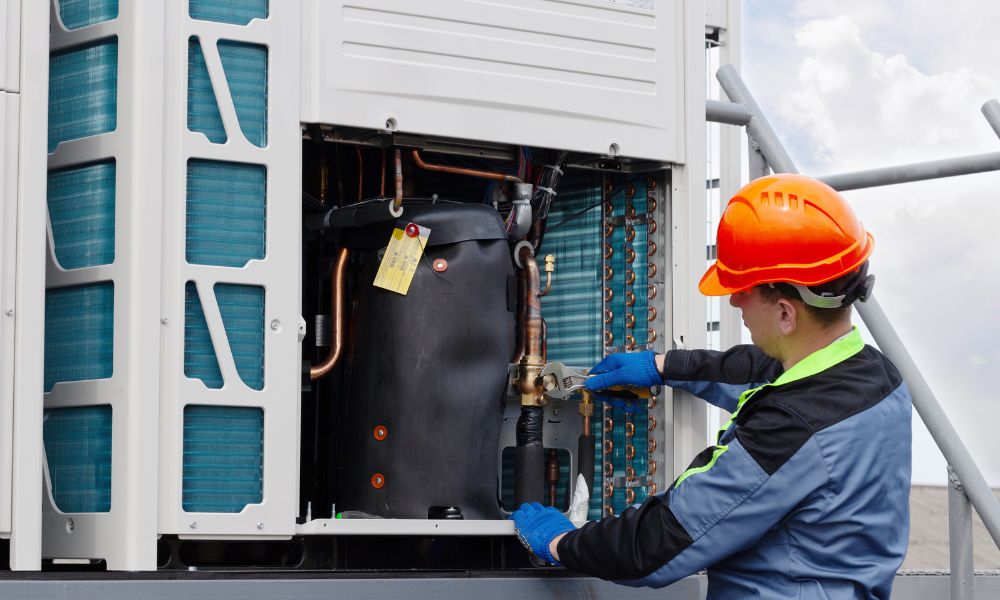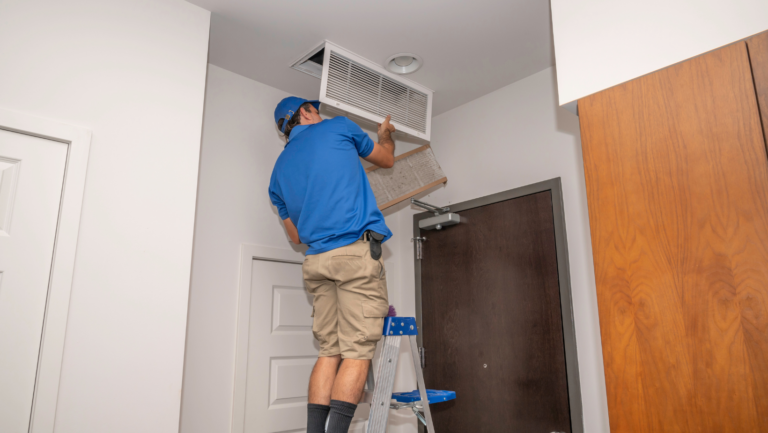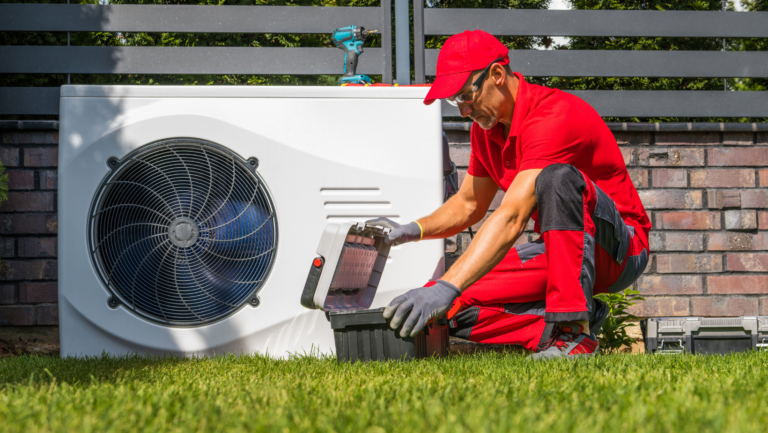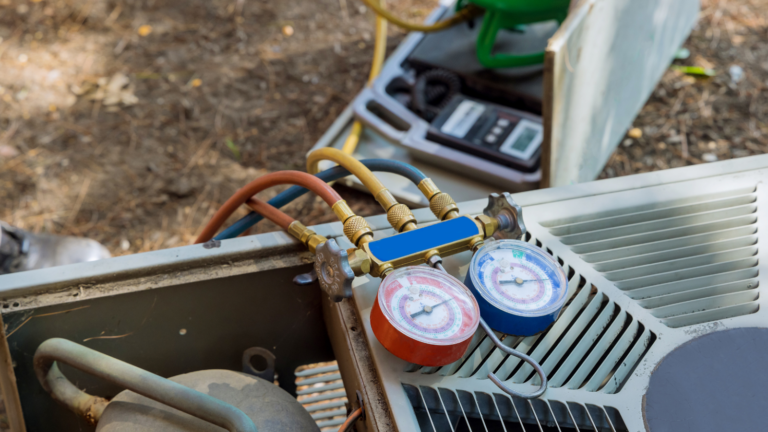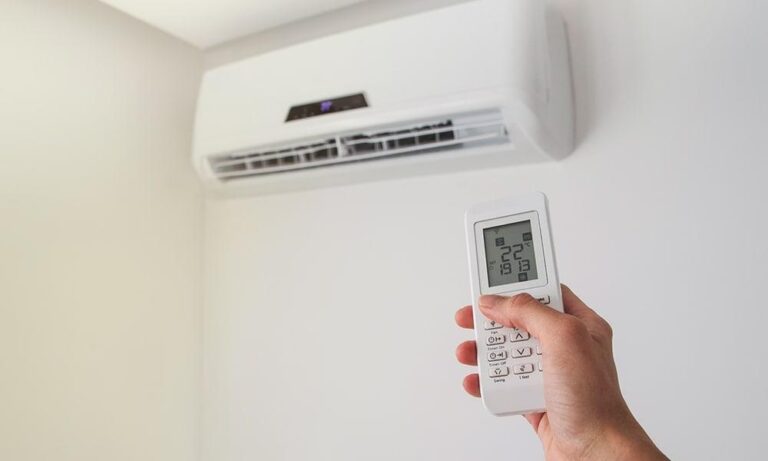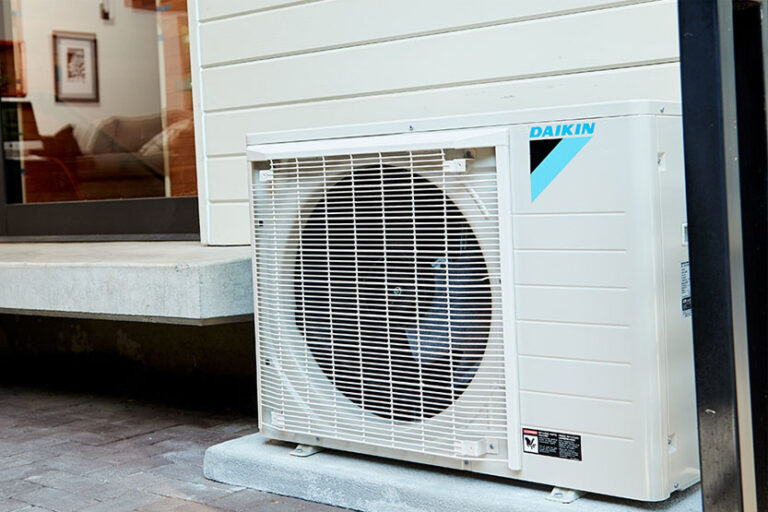How to Fix a Clogged VAV Heating Coil in Your HVAC System
Understanding the components of your HVAC system is crucial since it can help you identify and address any issues that come up. The thermostat is the central control, and it tells the system to heat or cool as needed. The furnace, on the other hand (also called a heat pump), generates warmth, and the air conditioning does the opposite (it handles cooling). The blower motor is the one responsible for circulating air throughout the building.
Additionally, the Variable Air Volume (VAV) system is very important when it comes to regulating airflow and sending it to different zones. This system includes various boxes equipped with controllers, air dampers and heating coils.
Even though all components are important, some are more prone to problems than others. Coils, such as the ones found in condensers and evaporators, can accumulate dirt and debris, reducing efficiency. Therefore, knowing how to identify and fix these issues is essential.
DO YOU NEED HELP? SPEAK TO A QUALIFIED TECHNICIAN
Diagnosing a Clogged VAV Heating Coil
Initial Symptoms and Observations
To diagnose a clogged VAV heating coil, you have to know how to recognize key symptoms. One of the primary indicators is reduced or absent airflow through the VAV box. This restriction will impact the system’s performance significantly.
Another telltale sign is when the discharge air temperature matches the medium-pressure air temperature, which suggests inadequate heating. Furthermore, you might see inconsistent heating in specific zones that the affected VAV box is supposed to serve.
If you’re attentive to these issues, you’ll be able to quickly identify potential issues with the heating coils and take the right action to restore optimal system function and comfort.
Physical Inspections
This stage is crucial when it comes to diagnosing a clogged VAV heating coil. You can start by visually inspecting the coil for any obvious obstructions or debris, which might impede airflow.
Then, you can inspect the filters and strainers because they can accumulate particles over time, restricting the water flow to the coil. Next, examine the control and balancing valves to make sure they are functioning correctly and not making the issue worse.
Lastly, you should verify that the piping is properly installed since incorrect installation can lead to reduced efficiency or blockages. If you thoroughly inspect your structure every so often, you might find the source of the problem, which will make it easier for you to apply the proper solution.
System Checks
Checking your system is essential to diagnose VAV heating coil problems. You can start by measuring water pressure and delta P, which allows you to assess flow. Then, verify control valve operation, including programming, linkages and actuator.
Also, check for airlocks by venting the coil, which allows you to ensure smooth water flow. Also, confirm that the flow moves properly through the coil. Finally, take a look at circuit setter valves to make sure they operate correctly.
SPEAK TO A QUALIFIED TECHNICIAN
Using diagnostic tools
Diagnostic tools are essential when it comes to identifying and resolving issues with clogged VAV heating coils. Let’s go over the primary tools you can use.
Temperature sensors are essential since they allow you to measure air temperatures at various points in the system, including supply air temperature, mixed air temperature, and the temperature after heating coils. Overall, these sensors allow you to detect abnormal temperature differentials that may indicate a clogged coil.
Another tool you can rely on is a pressure gauge, which allows you to assess the static pressure in the supply duct and measure the pressure drop in the entire heating coil. If you notice a higher-than-normal pressure drop, you might be dealing with a clogged coil.
At the same time, you can use flow meters, which help you measure the airflow rate through the VAV box and the water flow rate through the heating coil. If you notice a reduced airflow or water flow, it could mean you have a clogged coil or other system issues.
DIY Troubleshooting Steps
Addressing Airlocks
Troubleshooting clogged VAV heating coils often starts with addressing airlocks. To do this, you’ll have to open the vent valve to release trapped air and allow water to flow freely through the coil.
You also need to identify and eliminate air sources, for example, leaks in the piping system or improperly sealed connections. These steps will often resolve minor issues and restore the right coil function without the need for professional intervention.
Cleaning Strainers and Filters
Another important step in maintaining VAV heating coils is cleaning strainers and filters. You can begin by removing the strainer screens and thoroughly cleaning them to get rid of any accumulated debris. When you do this, you’ll be able to restore the proper water flow through the coil.
Furthermore, you should replace dirty filters in the system since these can restrict airflow and contribute to coil clogging. Overall, regular maintenance of these components can significantly improve system efficiency and allow you to prevent future issues.
SPEAK TO A QUALIFIED TECHNICIAN!
Inspecting and Testing Valves
You need to inspect and test valves to maintain VAV heating coils. You can start by verifying the control valve’s functionality, both manually and through automated systems. Also check the balancing valves to make sure they’re operating correctly and free from restrictions.
Additionally, look for any broken or stuck valves, which might be impeding proper flow. Lastly, you should also confirm that all the valves are installed in the right direction since backwards installation can severely disrupt the system’s performance.
All of these checks are thorough, and they will allow you to identify the source of coil clogging issues.
Checking Piping and Connections
Proper connections and piping are essential when it comes to VAV heating coil performance. Therefore, you should verify that both the supply and return piping are correctly set up to ensure optimal flow.
You can also inspect for hidden obstructions, for example, excess solder, which will restrict water movement. Also check that monoflow tees are correctly installed since these components help balance the water distribution as well.
Addressing Sediment and Debris
To address sediment and debris in VAV heating coils, you have to follow several steps. Firstly, flush the coil and associated piping to remove loose particles. If you find any stubborn blockages, consider chemical cleaning, but make sure you’re following the right safety precautions.
Also, monitor delta P (pressure difference) across the coil, since high readings can indicate clogs. Check the pumps for proper operation and system pressure for optimal levels, and inspect heat exchangers to identify any signs of fouling or corrosion.
SPEAK TO A QUALIFIED TECHNICIAN
Preventative Maintenance
If you want to keep your VAV heating coils functioning properly, regular preventative maintenance is essential. This includes scheduled inspections of strainers, heating coils and valves to catch potential issues early.
At the same time, monitoring your system performance can also help identify efficiency drops before they become major issues. You should also routinely clean coils and filters and periodically flush heating loops, which prevents sediment buildup and maintains system efficiency.
Many maintenance tasks can be performed by facility staff, so you should make sure they routinely do them to avoid bigger problems. Even so, keep in mind that complex issues often require professional attention.
Regular Inspections
You can implement a schedule of regular inspections. That way, you’ll make sure you’re properly maintaining the VAV heating coils.
In these checks, you must make sure you’re including thorough examinations of heating coils, strainers and valves, which allow you to detect signs of wear, damage or blockages.
With consistent monitoring of the system performance, you’ll be able to detect efficiency declines or unusual behavior early. If you do this, you can address problems before they escalate, reducing downtime and repair costs while still ensuring optimal system operation.
Routine Cleaning
This step is essential to prevent clogs in VAV heating coils. It involves periodic cleaning of filters and coils to remove accumulated debris, dust, and other contaminants that can impede airflow and heat transfer.
At the same time, the regular flushing of heating loops helps you remove sediment that builds up over time, reduces efficiency and can potentially cause blockages. Overall, establishing a consistent cleaning schedule based on system usage and environmental factors is essential because it can significantly extend the life of HVAC components and help you maintain peak performance.
SPEAK TO A QUALIFIED TECHNICIAN
System Balancing
Balancing your system is crucial for optimal VAV heating coil performance. It’s a process that involves guaranteeing the proper water flow and pressure distribution throughout the system, which is essential for efficient heat transfer and consistent temperature control.
It’s important to keep in mind that verifying the system balancing ensures that the system will always accurately respond to temperature demands. Regular balancing helps maintain energy efficiency, extends equipment life, and improves overall comfort in the building. However, keep in mind that this task requires specialized knowledge and equipment, so you should consult with HVAC professionals.
Proper Water Treatment
Implementing the proper water treatment is crucial to prevent scale buildup and corrosion in your heating coils. This means you must use the right chemical treatments tailored to your specific system and water quality.
Overall, regularly monitoring water quality also helps ensure that the treatment methods you’re using are still effective over time. This process not only prevents clogs and extends equipment life but also helps maintain system efficiency. Lastly, even though you can perform basic water quality checks in-house, developing and implementing a comprehensive treatment plan often requires you to hire specialists.
Advanced Troubleshooting and Professional Assistance
When to Call a Professional
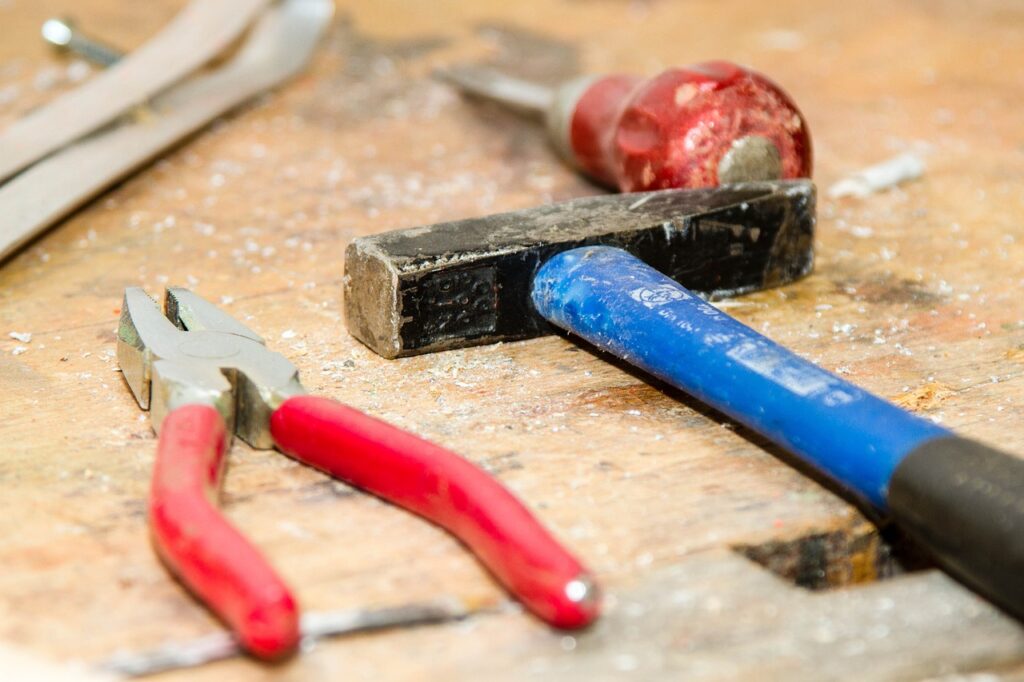
Even though you can perform certain checks in-house and even implement a lot of good solutions, complex system issues will require expert interventions. If basic troubleshooting can’t resolve persistent problems, it’s time to call a professional technician.
Some signs that you need professional attention include unusual noises, significant energy bill fluctuations, and thermostat alerts. Additionally, you should definitely consult a technician if you need Testing and Balancing (T&B) to optimize system performance.
Working with professionals guarantees that you’ll get a precise diagnosis. Furthermore, they can solve intricate HVAC issues, preventing minor issues from escalating into major, costly repairs.
The Importance of Professional T&B
Professional T&B is essential to verify proper system operation. It ensures that flow rates are set correctly and pressure drops are within specified, healthy ranges.
Specialized testing and balance also help optimize HVAC performance, enhancing energy efficiency and occupant comfort. Professionals will use specific equipment to measure and adjust airflow, water flow, and system pressures. Overall, this process is particularly important for VAV systems, where proper balancing is crucial to maintain consistent temperatures across different zones and prevent issues like “hunting” for air or losing calibration.
Documentation
Maintaining comprehensive records of all maintenance and repairs is essential for HVAC management. Documentation helps you track the system’s history, identify recurring issues and plan the right preventive maintenance.
At the same time, it helps in warranty claims and future troubleshooting. You should keep detailed logs of routine inspections, component replacements, filter changes, and any repairs performed. This information is crucial for technicians during future service calls and will help extend the lifespan of the HVAC system. The right documentation also assists in making informed decisions about system upgrades or replacements when you need them.
